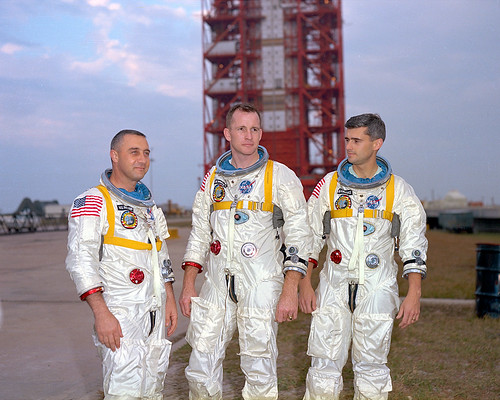
Pat Bagley for the Salt Lake Tribune, please look closely.
OND is a community feature on Daily Kos, consisting of news stories from around the world, sometimes coupled with a daily theme, original research or commentary. Editors of OND impart their own presentation styles and content choices, typically publishing each day near 12:00AM Eastern Time.
OND Editors consist of founder Magnifico, regular editors jlms qkw, maggiejean, wader, Oke, rfall, and JML9999, alumni editors palantir, BentLiberal and ScottyUrb, guest editor annetteboardman, and current editor-in-chief Neon Vincent. We invited our readers to comment & share other news.
I generally survey a number of news sites around the world and country, choose around 15 articles I can quote, and a few links. Sometimes I editorialize.

NASA photo
Remembering Fallen Heroes: A Tough Week for NASA
NASA’s First Disaster Happened on the Launch Pad
In NASA’s early years, the agency learned by doing; developing tests and procedures as programs wore on. One test developed and used in the Mercury program was the “plugs-out test,” a prelaunch test of the spacecrafts systems through a simulated countdown on launch. It was never considered a dangerous test, but on Jan. 27, 1967, Apollo 1′s plugs-out test claimed the lives of the crew.
Typical for the first flight of a new program, the plan for Apollo 1 was a simple shakedown cruise. The crew – Mercury astronaut Gus Grissom, Gemini veteran Ed White, and rookie Roger Chaffee – would take just the Command and Service Module (CSM) into Earth orbit.
The plugs-out test started out routinely with the flight-ready spacecraft mounted on its unfueled Saturn IB rocket. The umbilical power cords that supplied power were removed – the plugs were out – putting the spacecraft on its internal batteries and the crew cabin was pressurized with 16.7 pounds per square inch of pure oxygen. As the crew entered the spacecraft around 1pm that afternoon, a full launch-day staff of engineers in mission control took their positions for the test. There was also a staff of men in the White Room; the room that gave the astronauts passage to the spacecraft remained attached to the vehicle.
Is the ISS today a high-oxygen interior? Was this changed?


